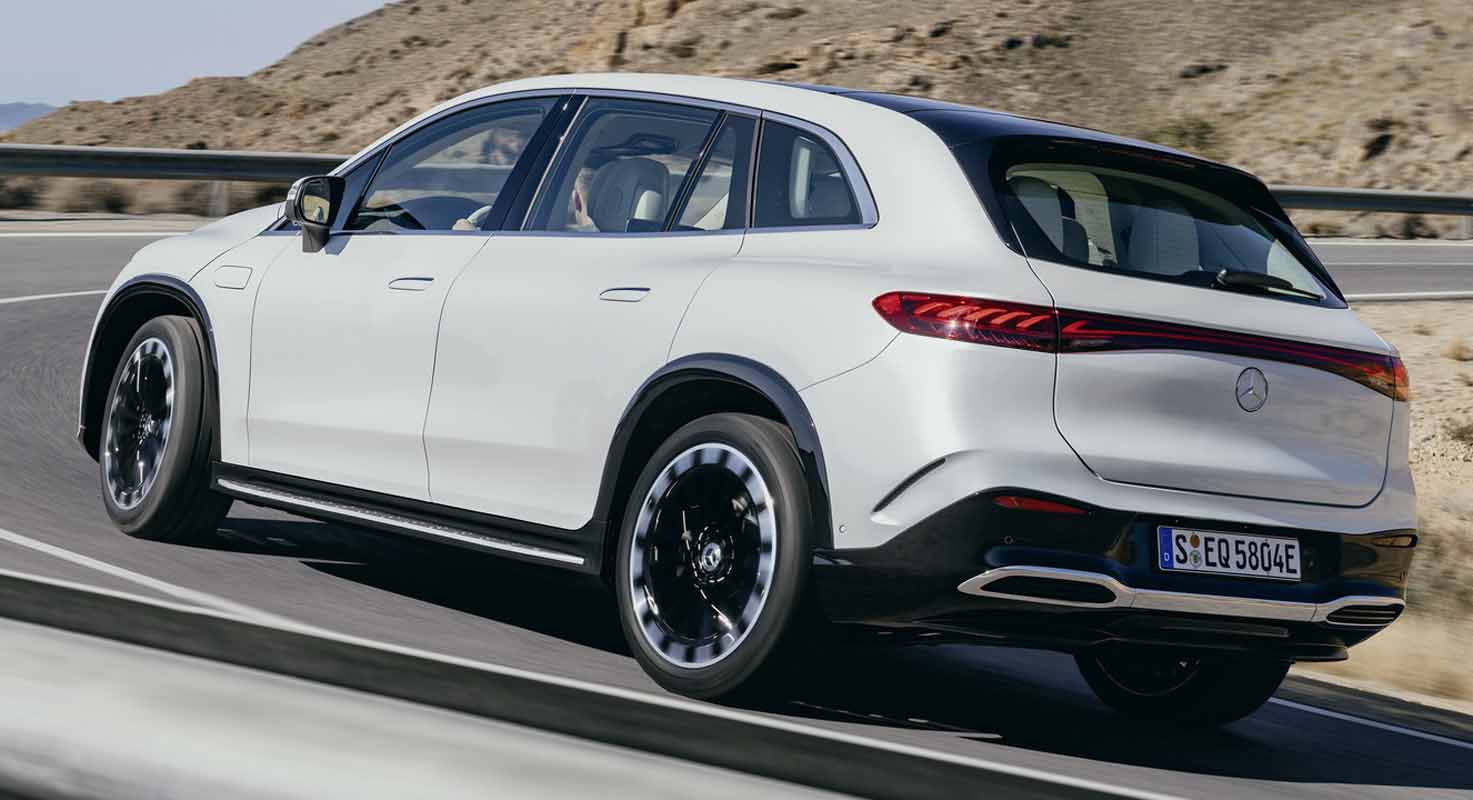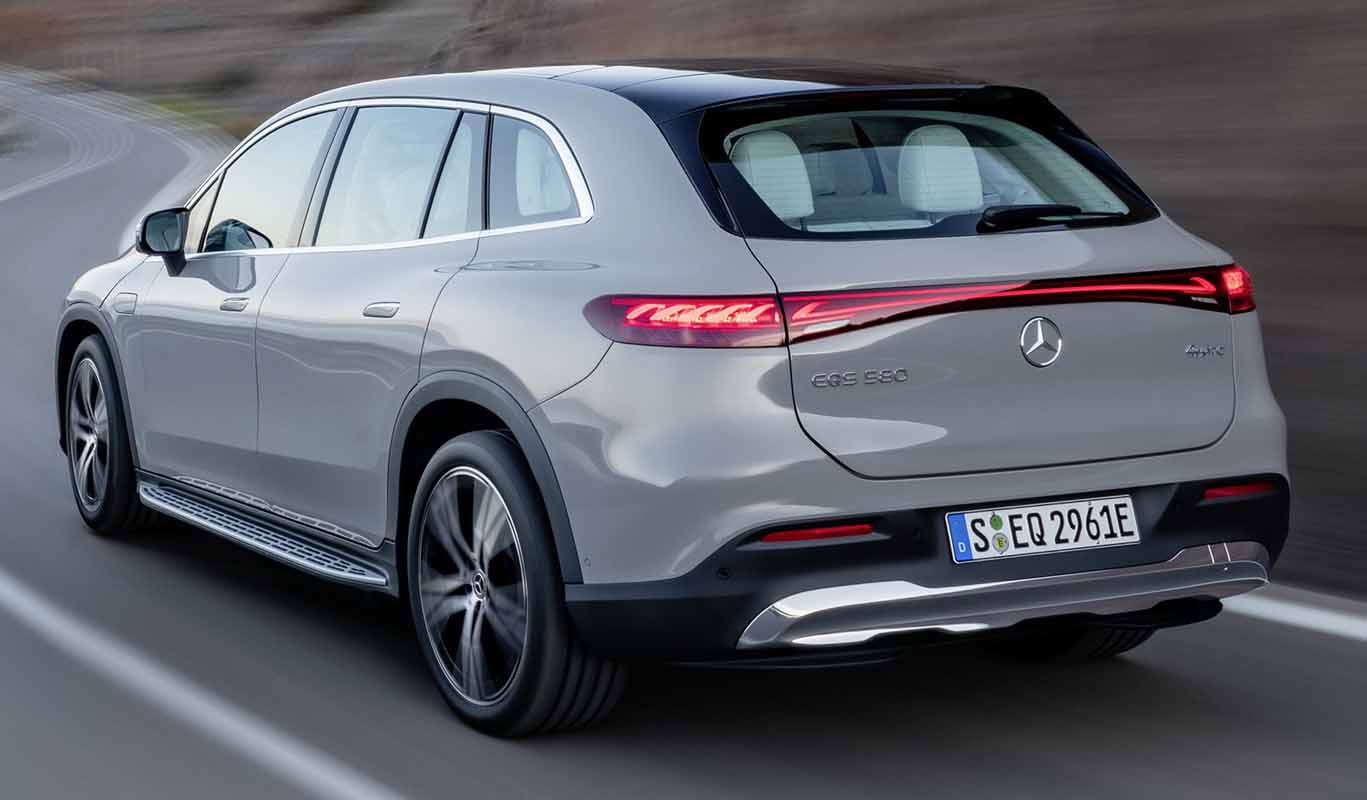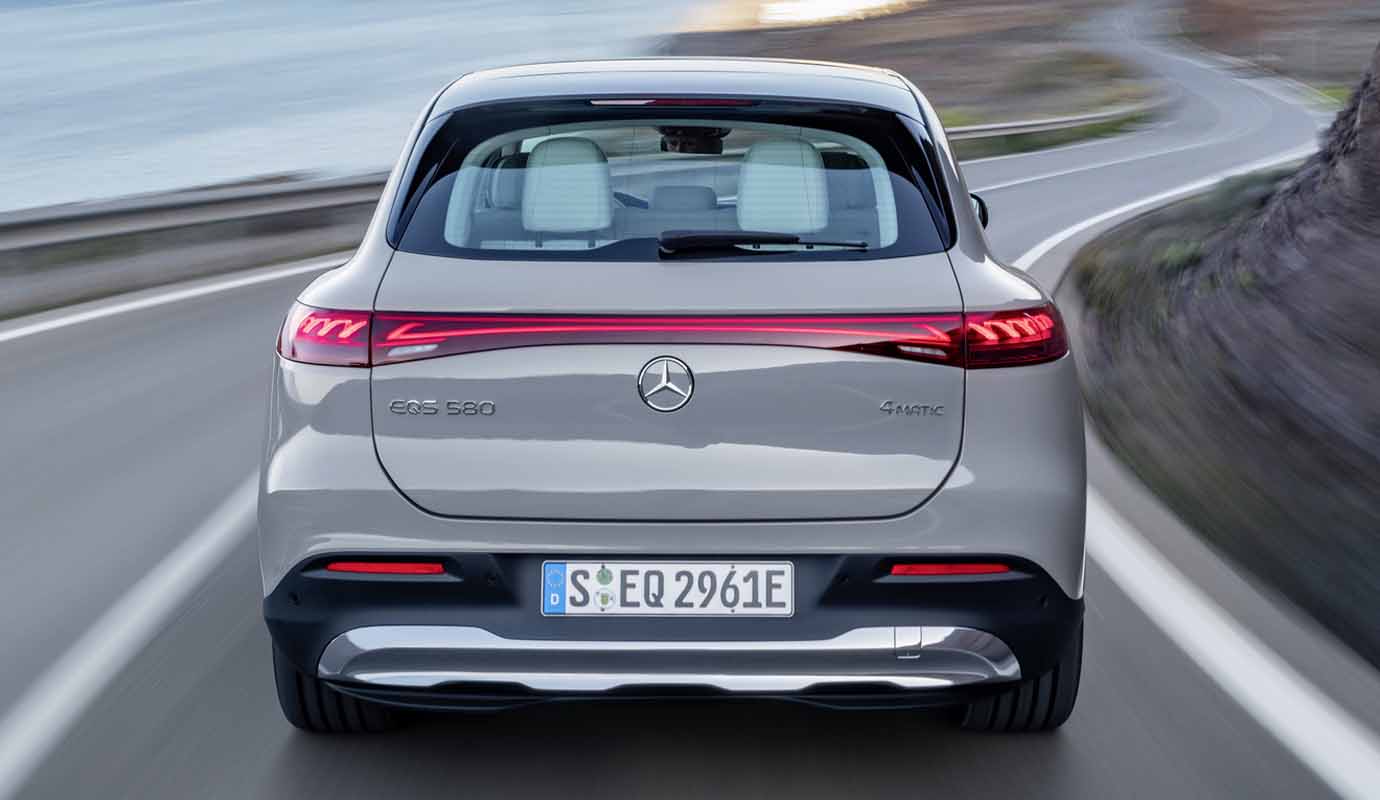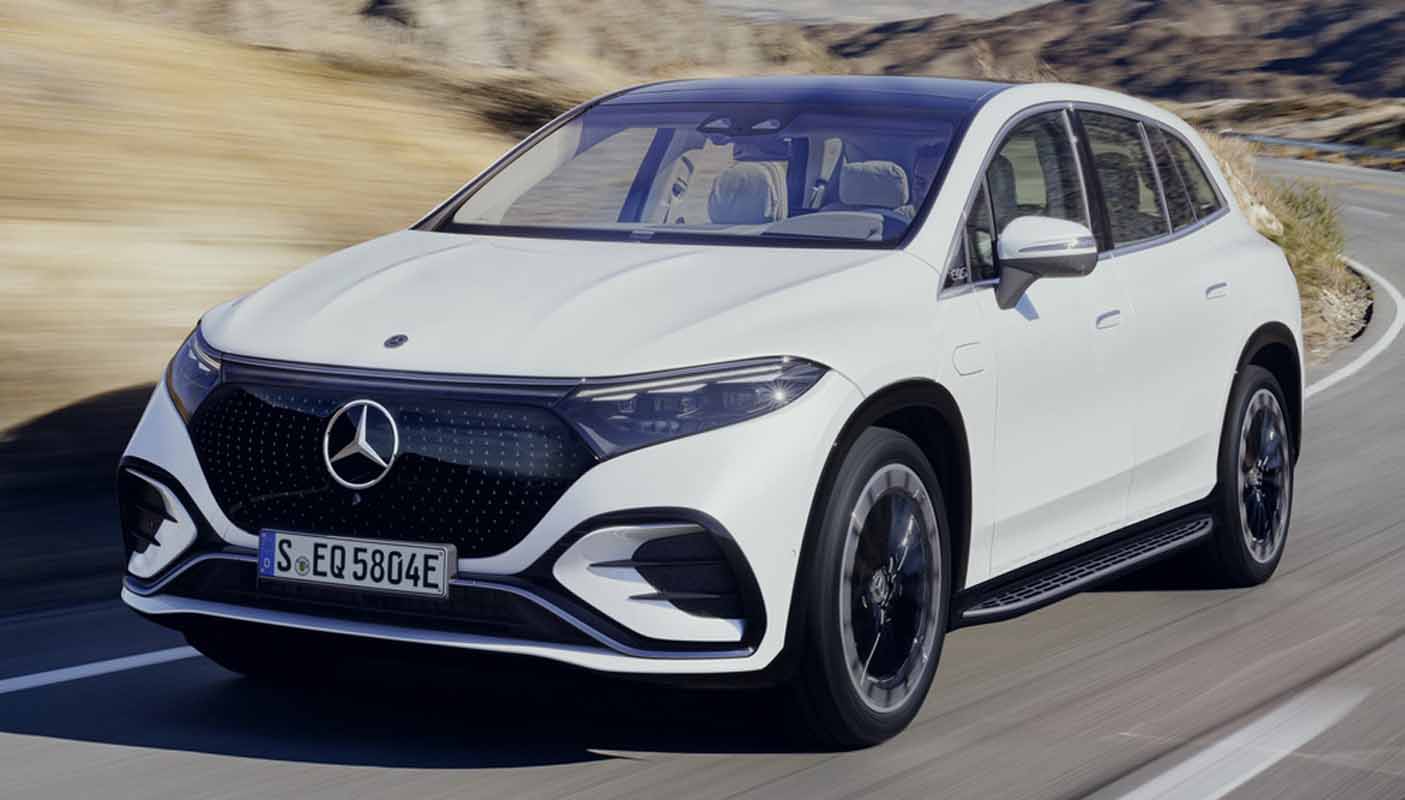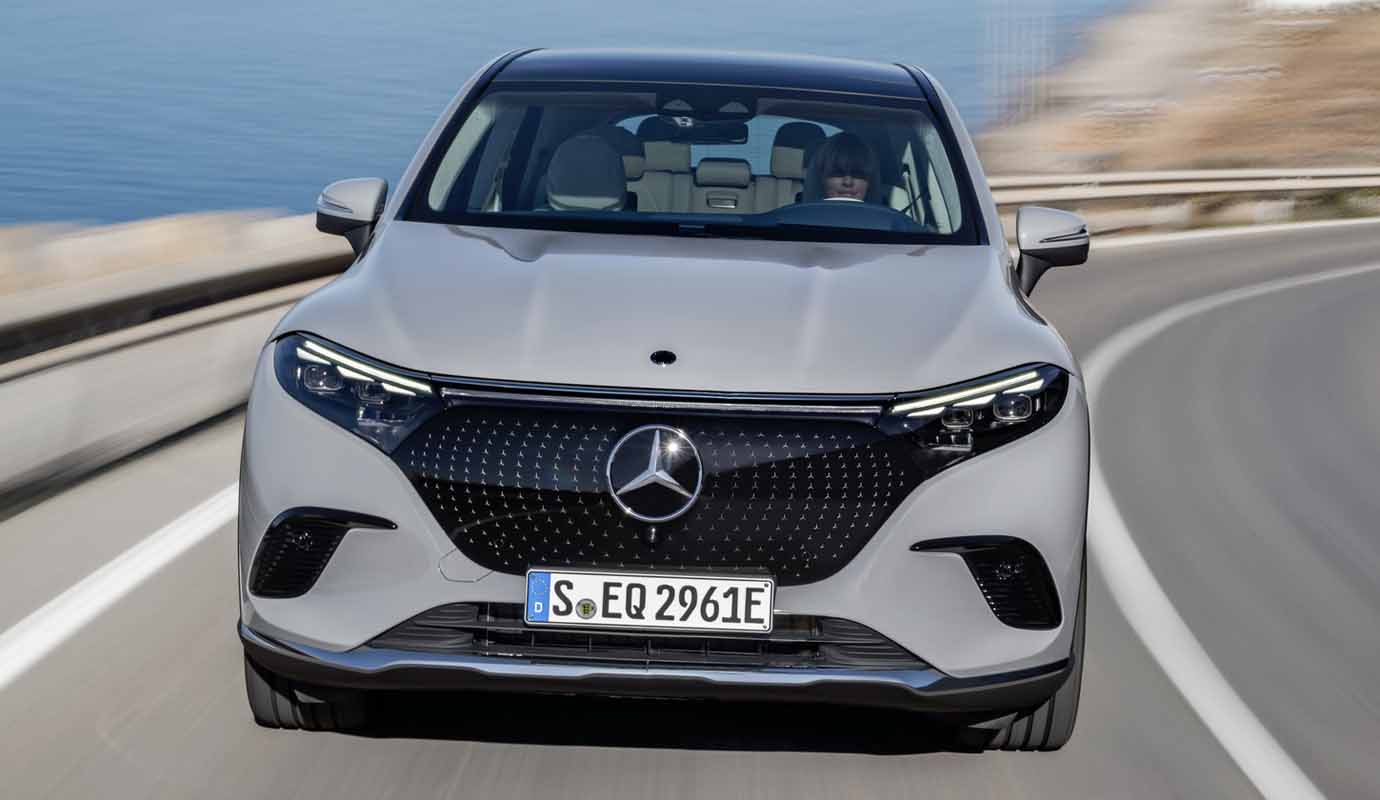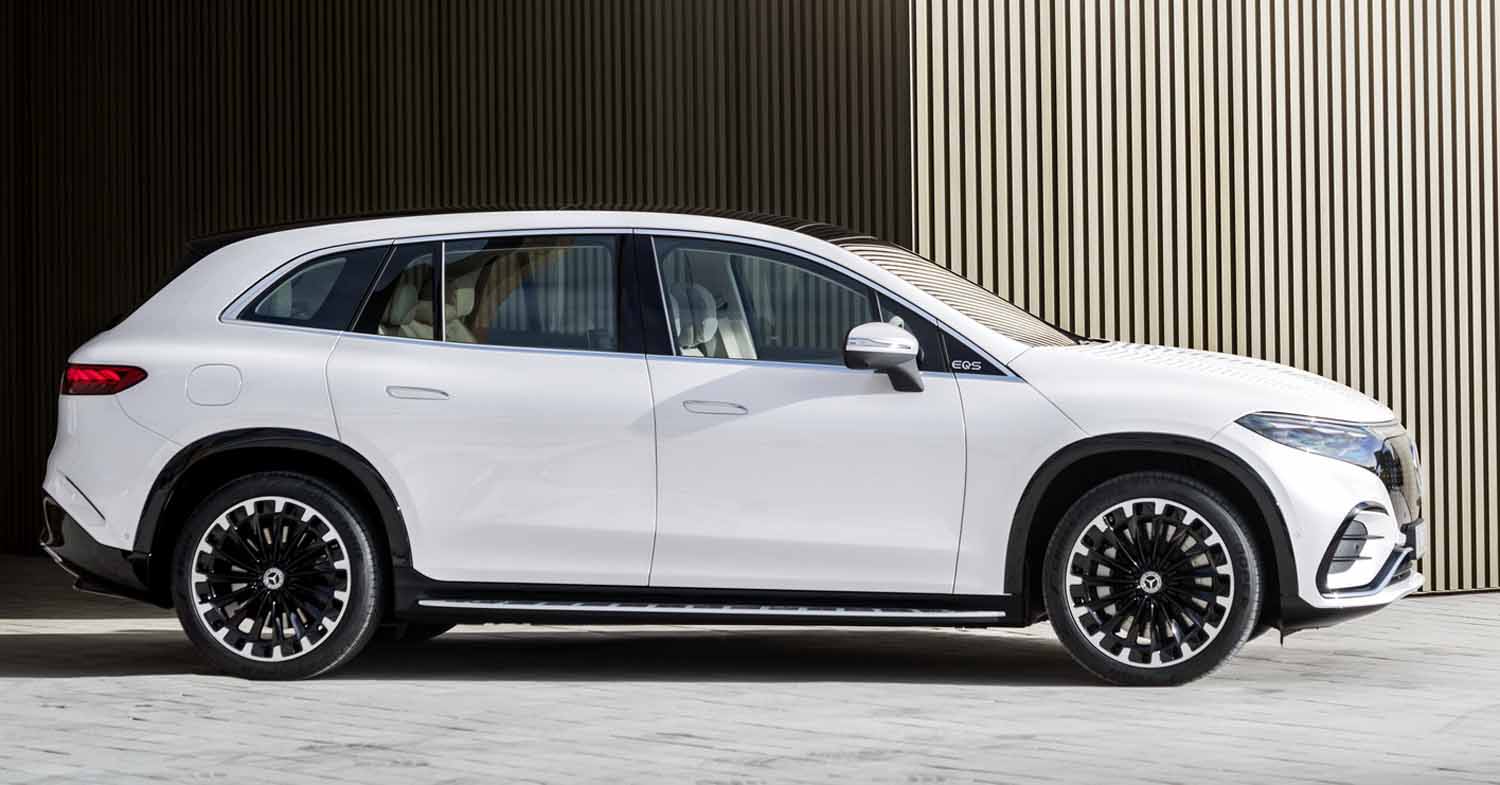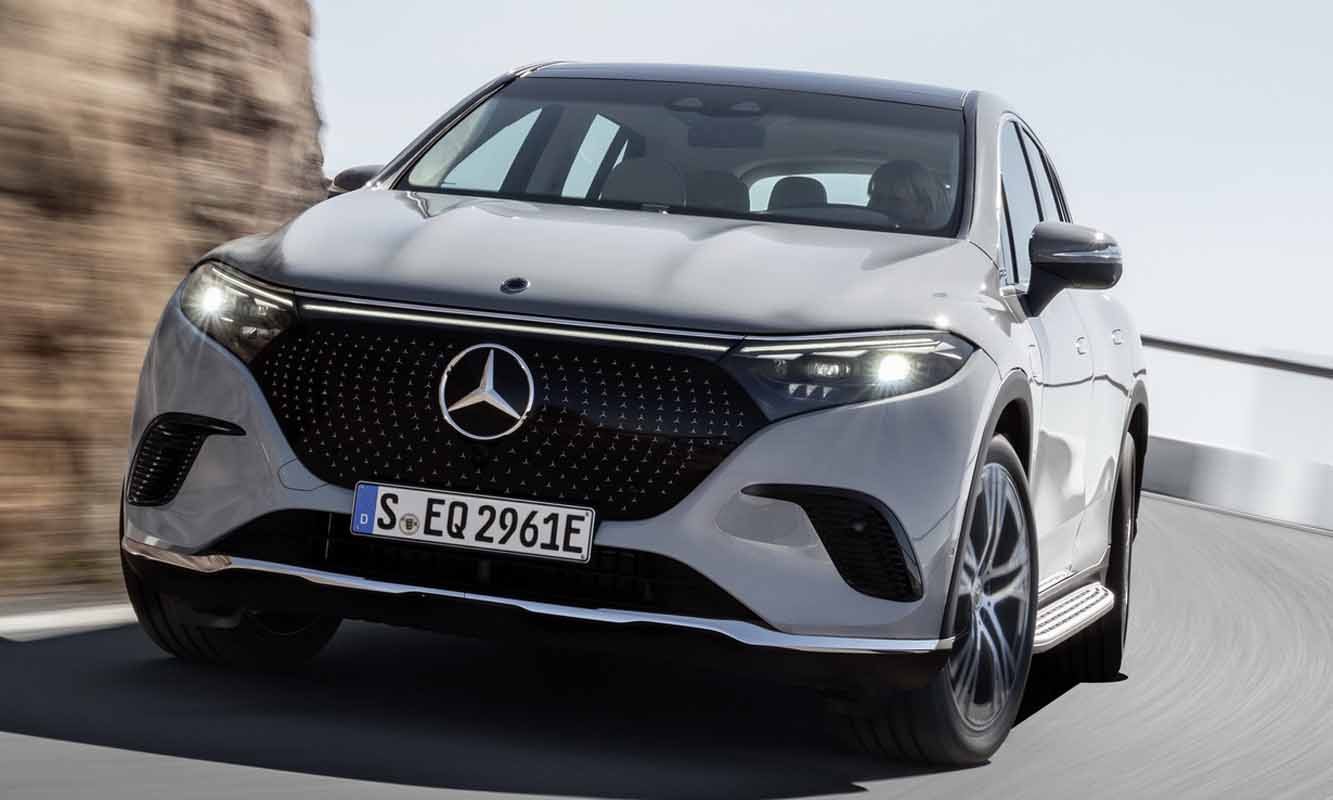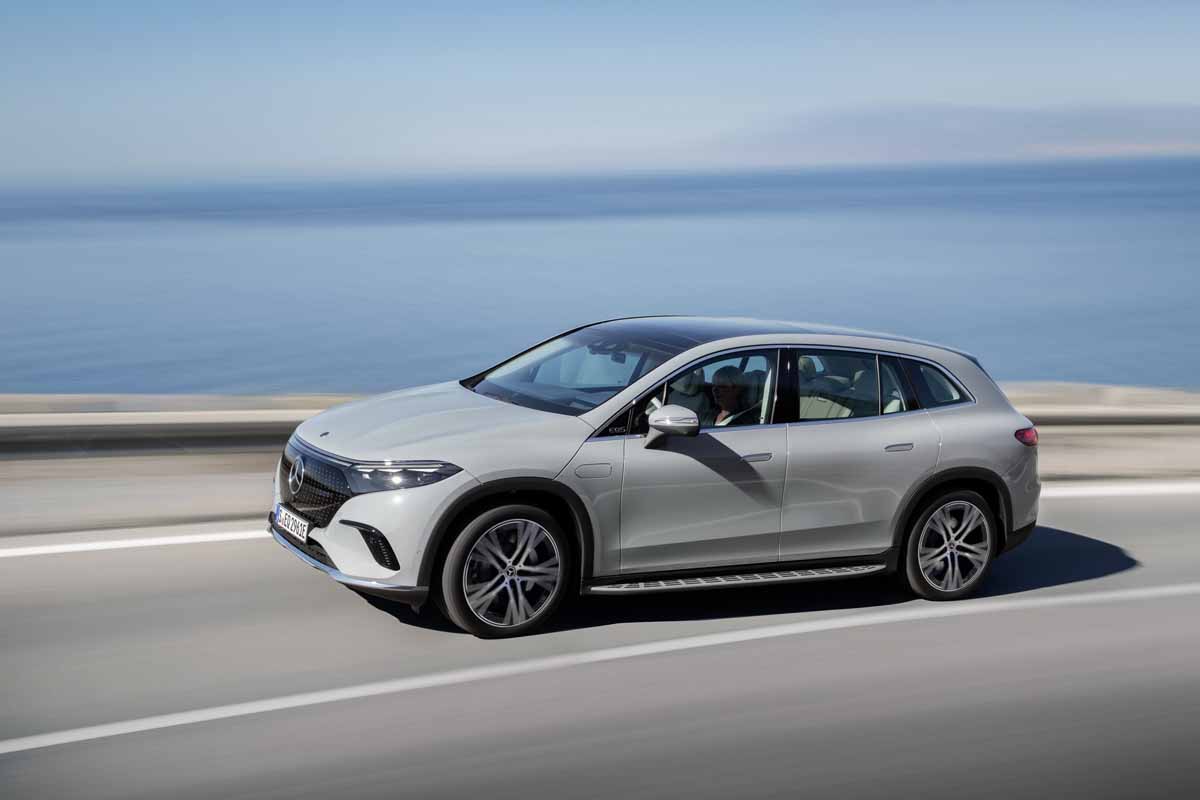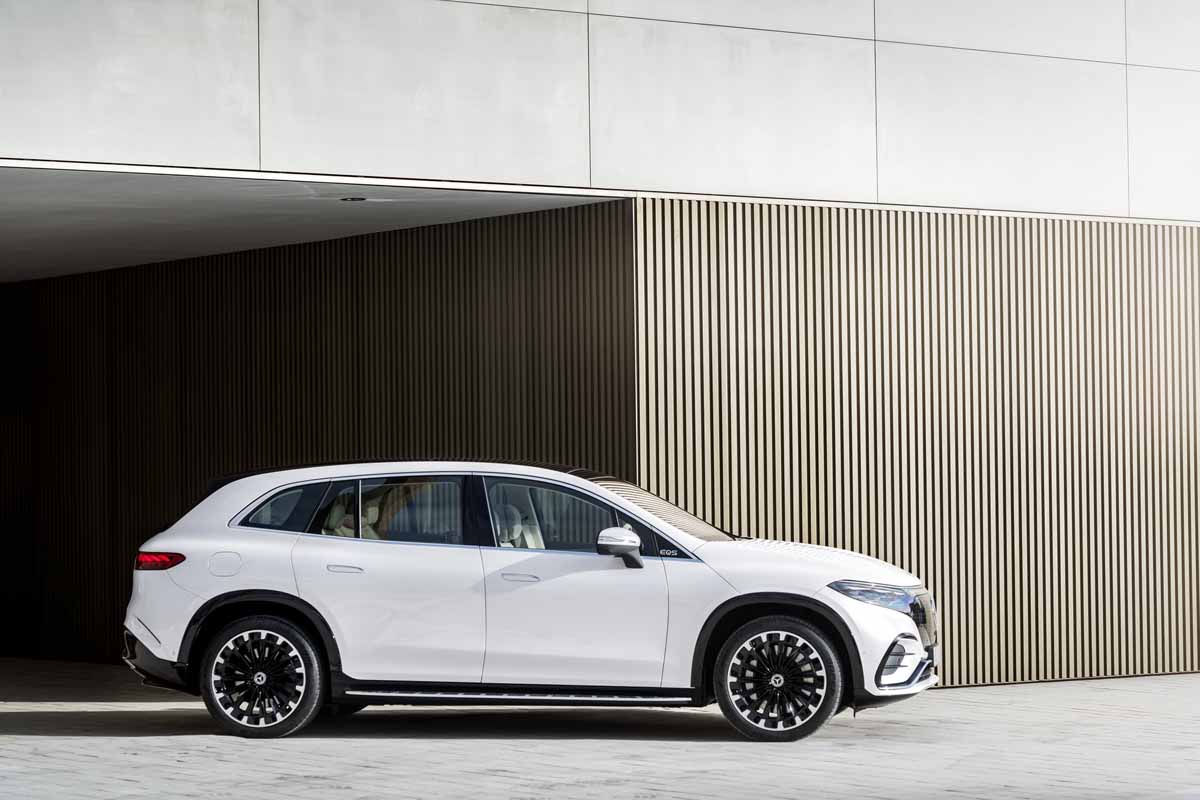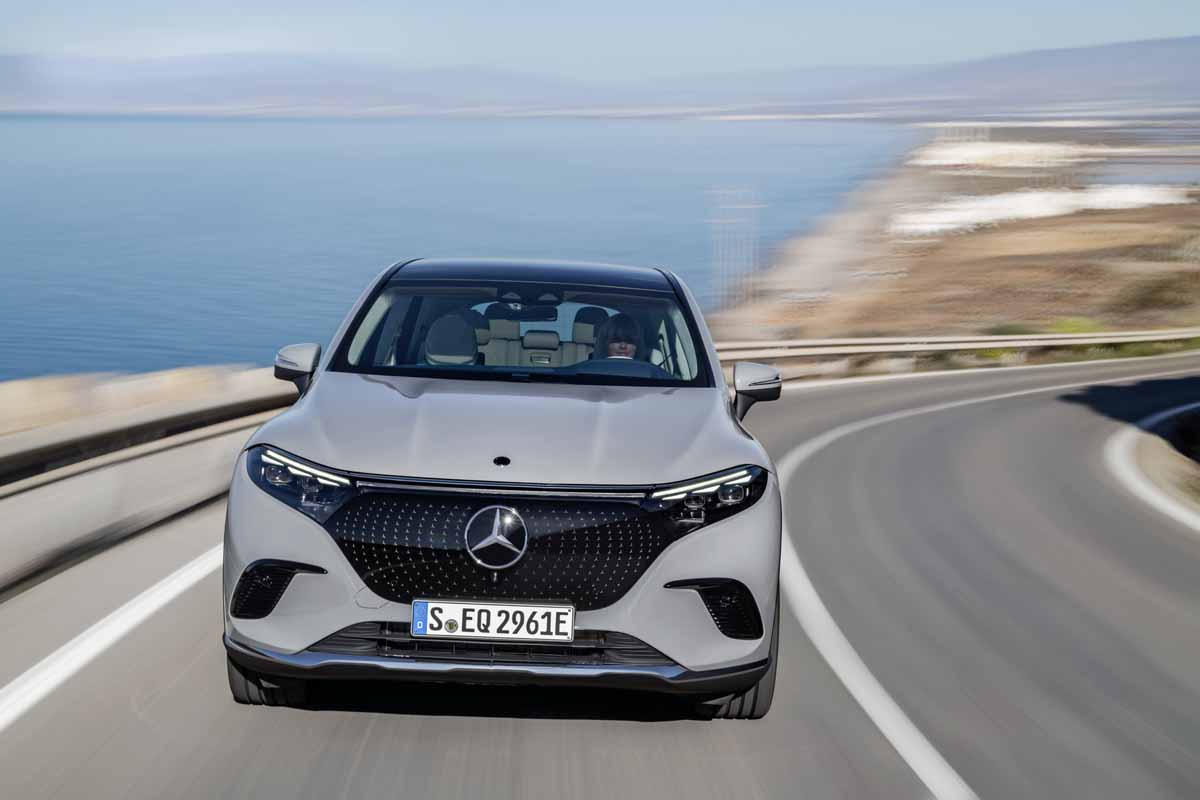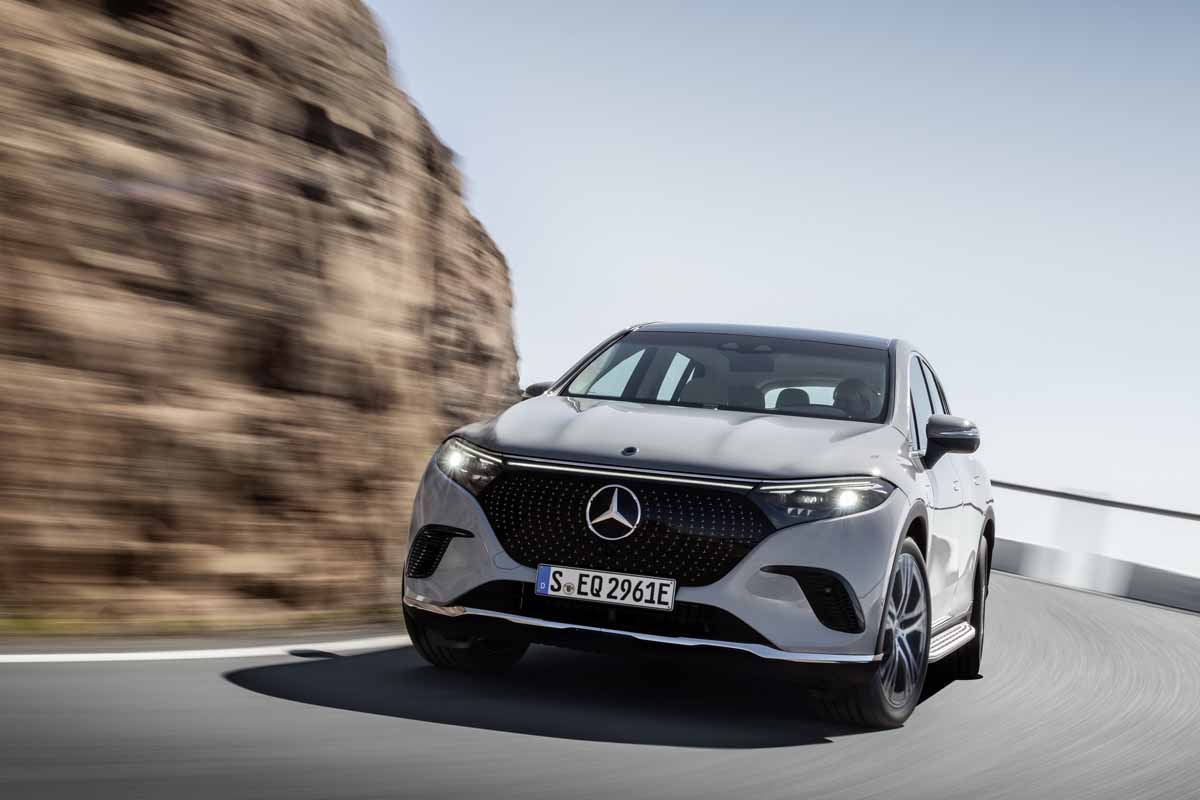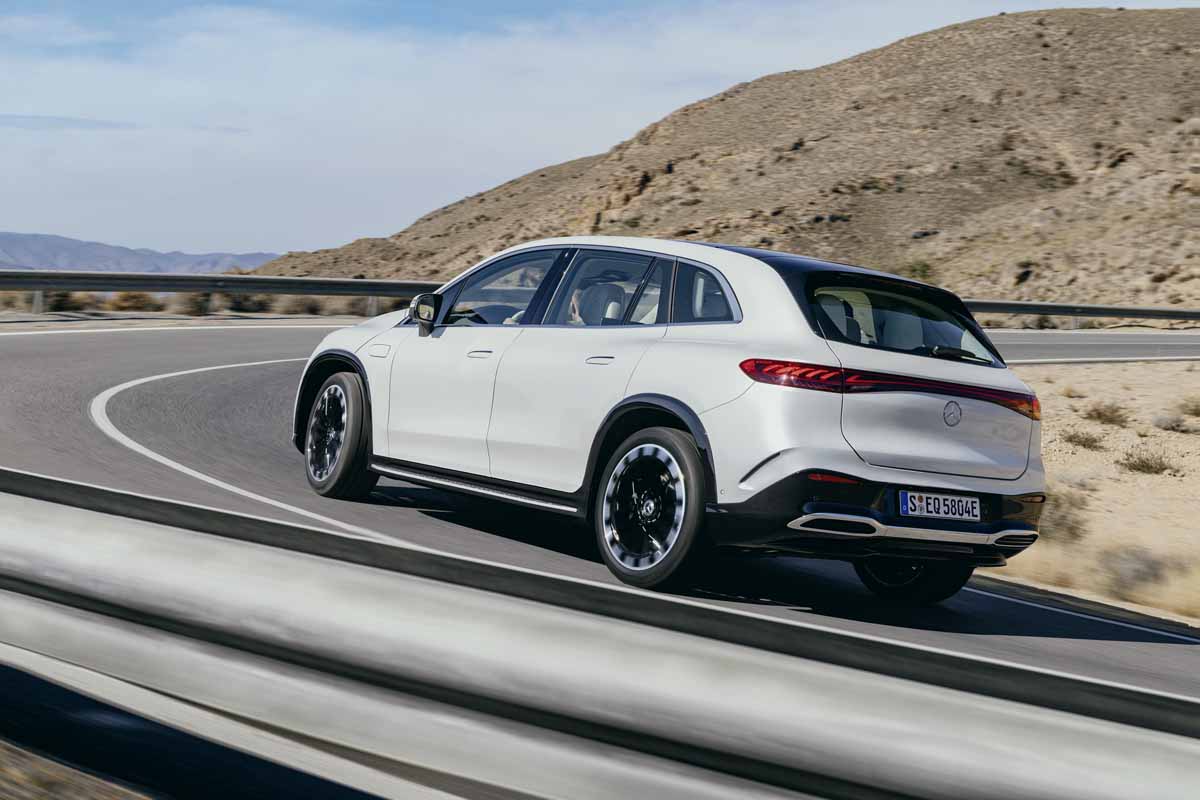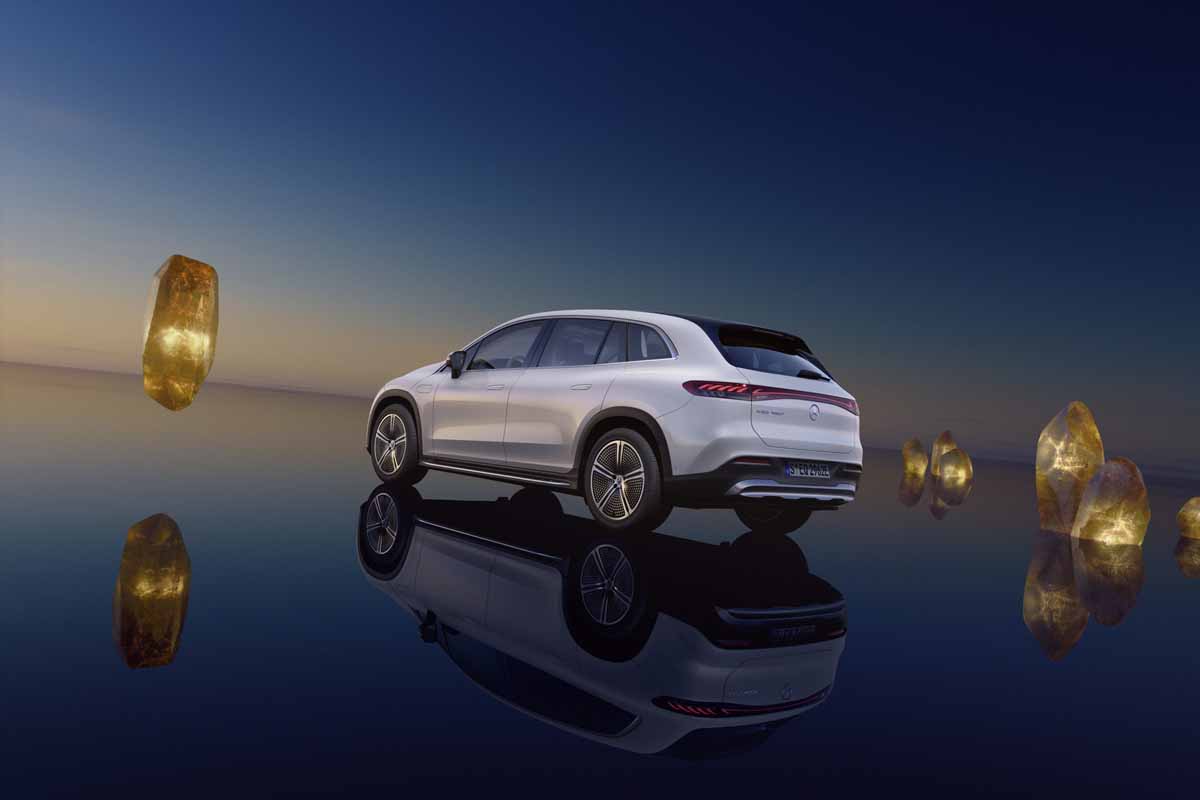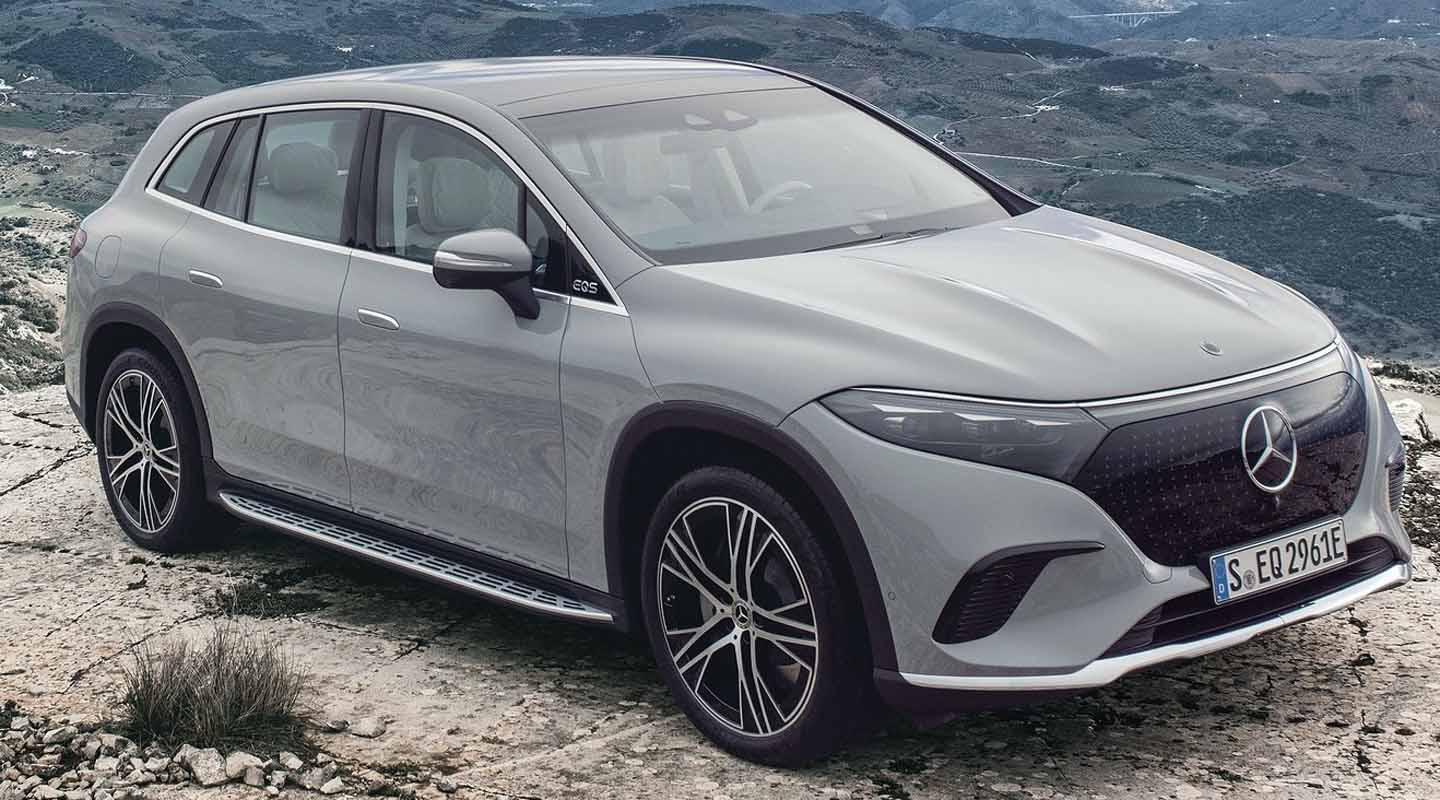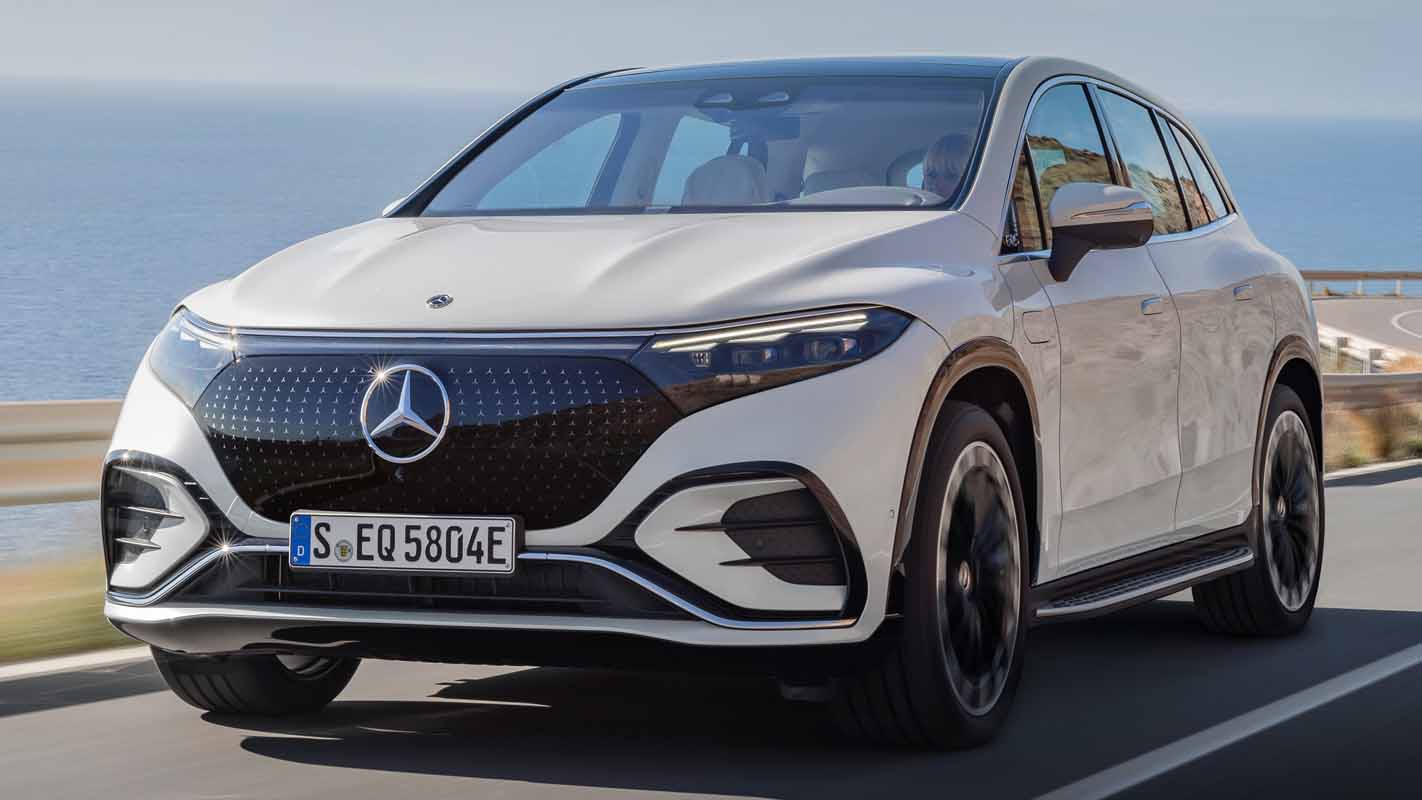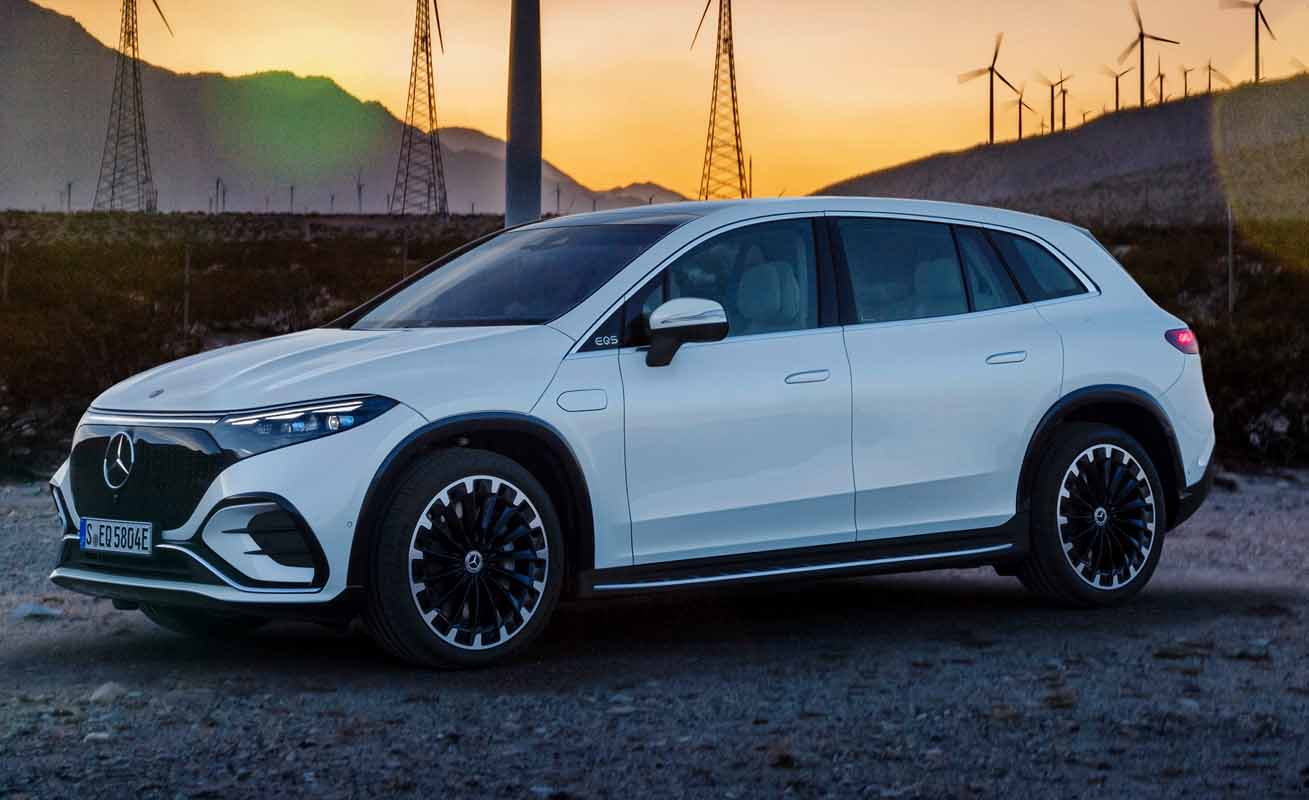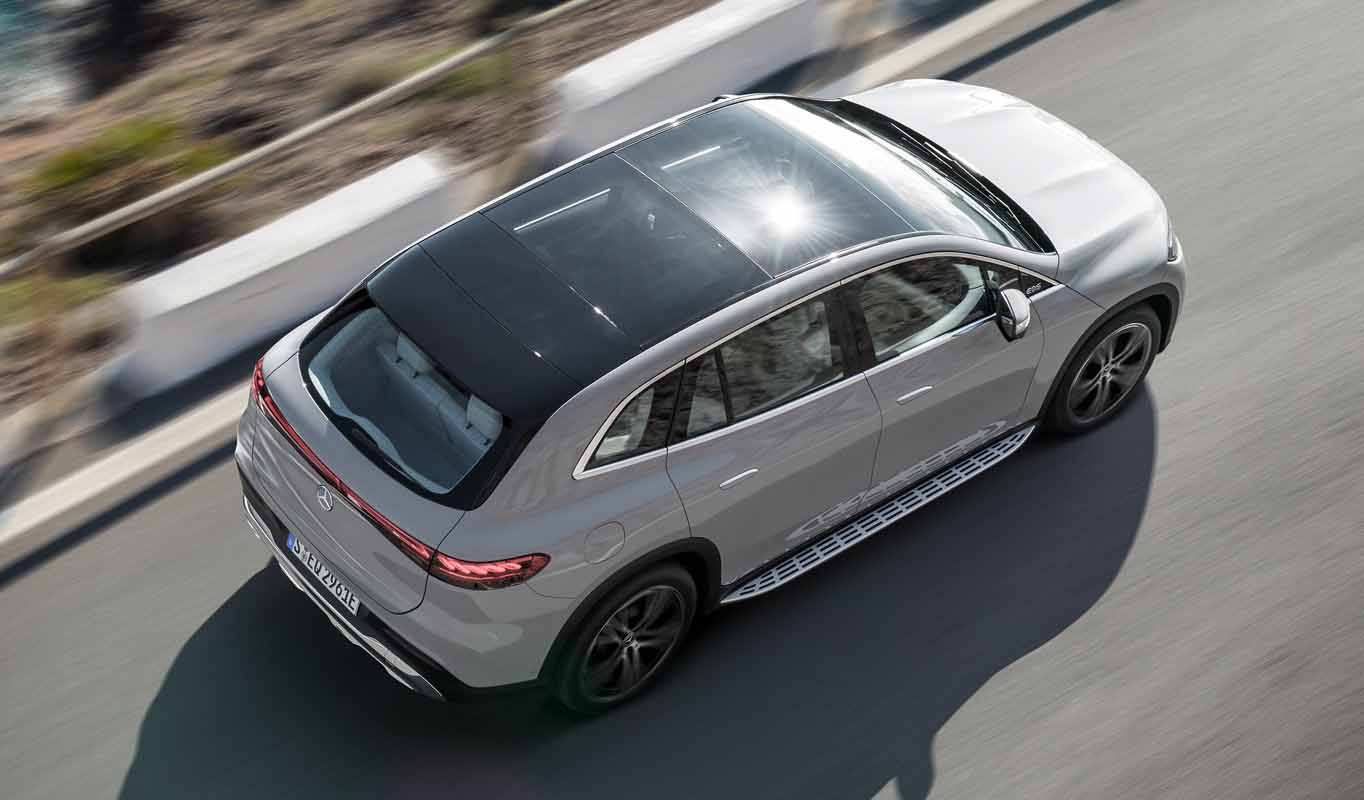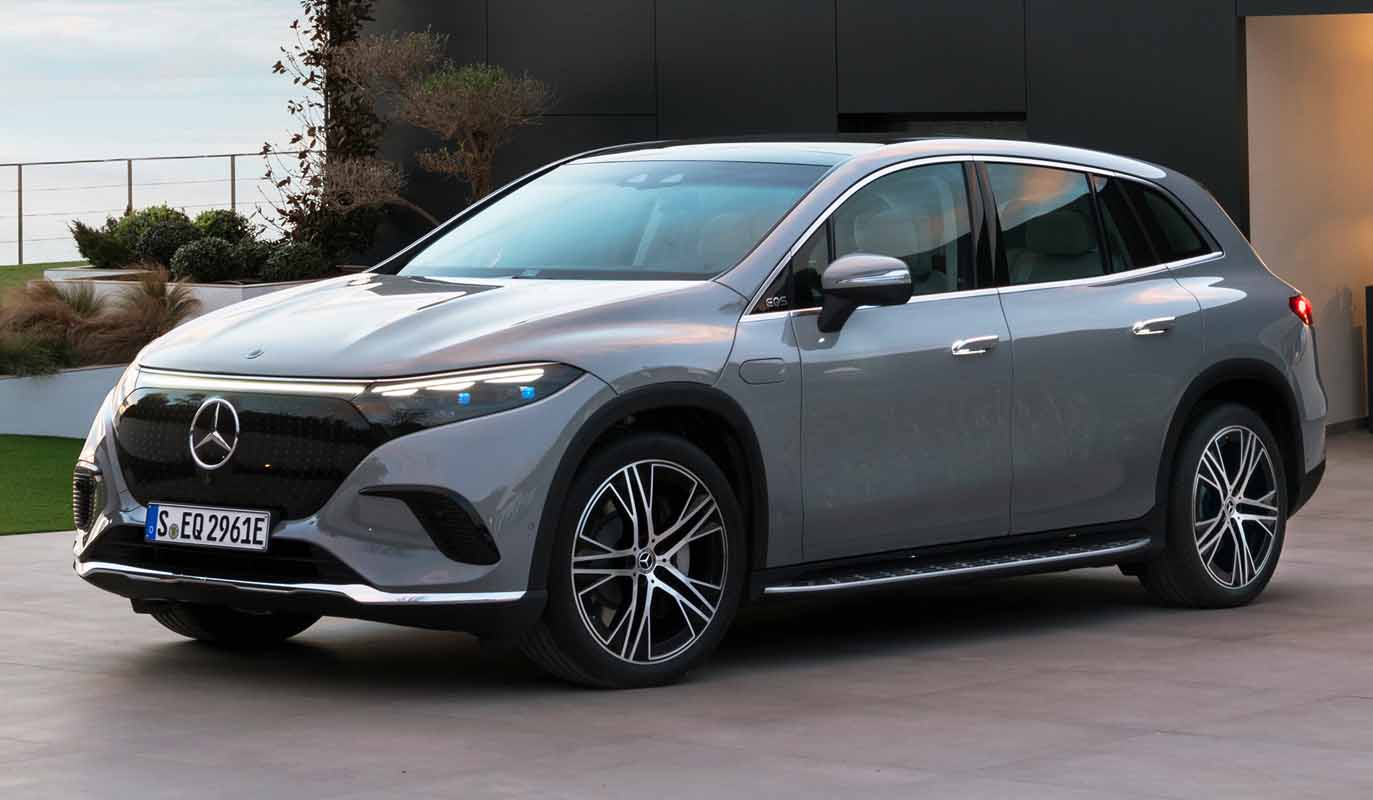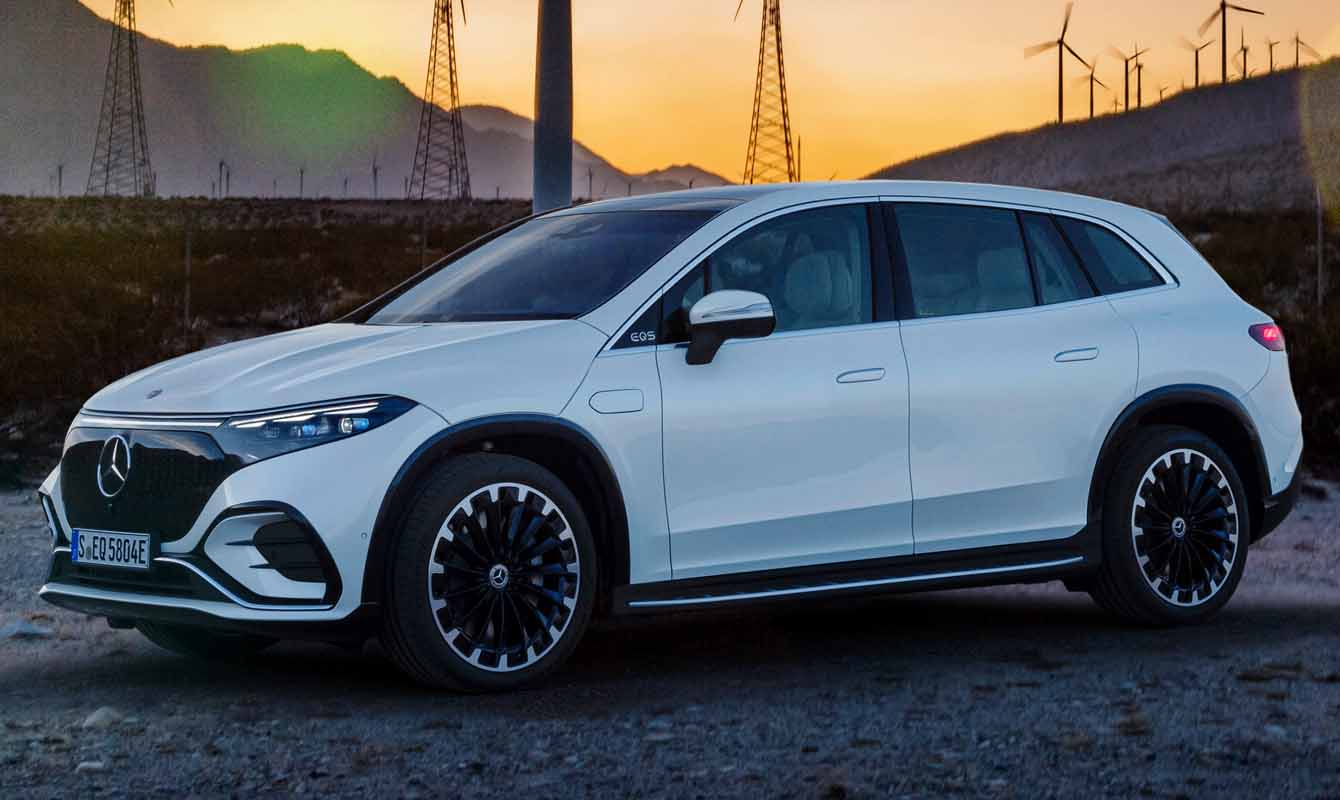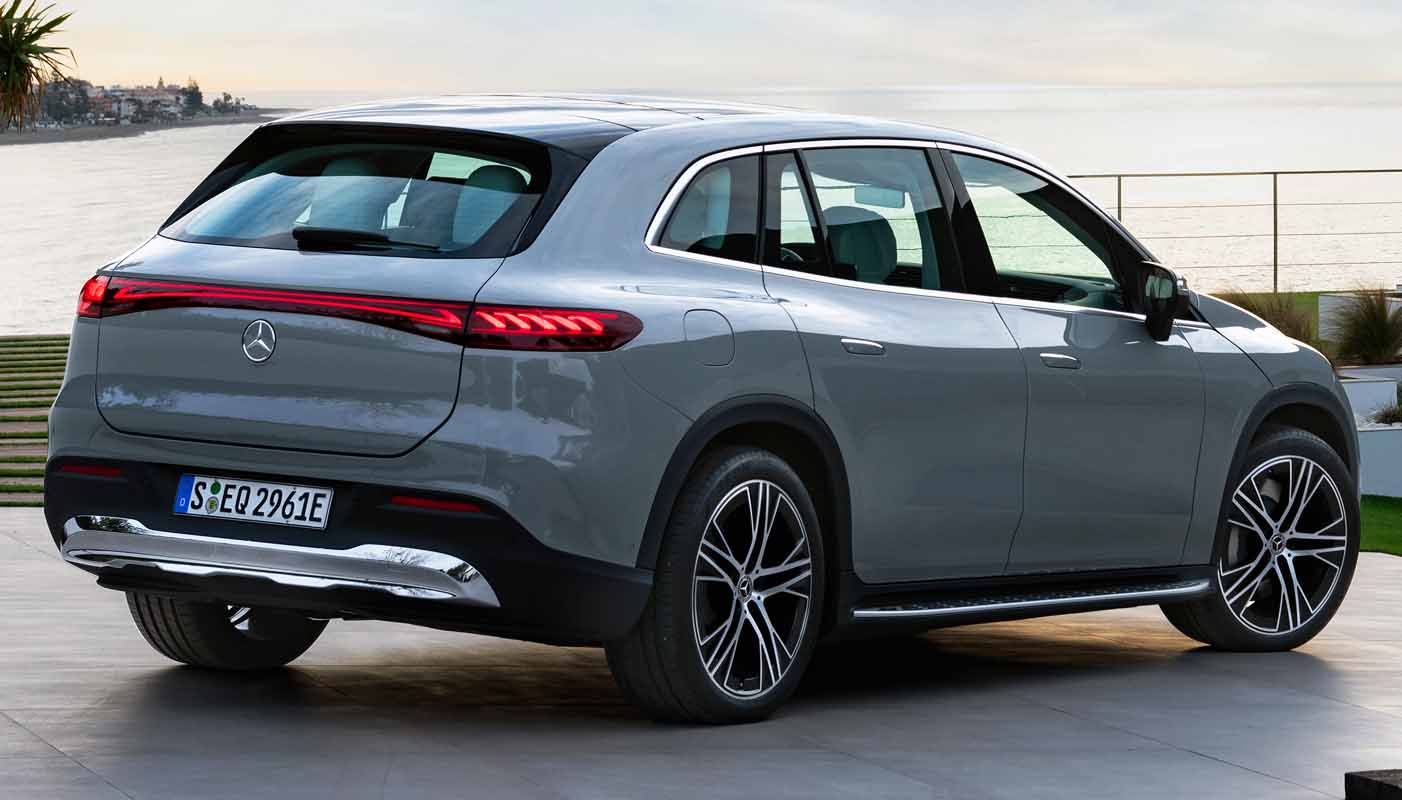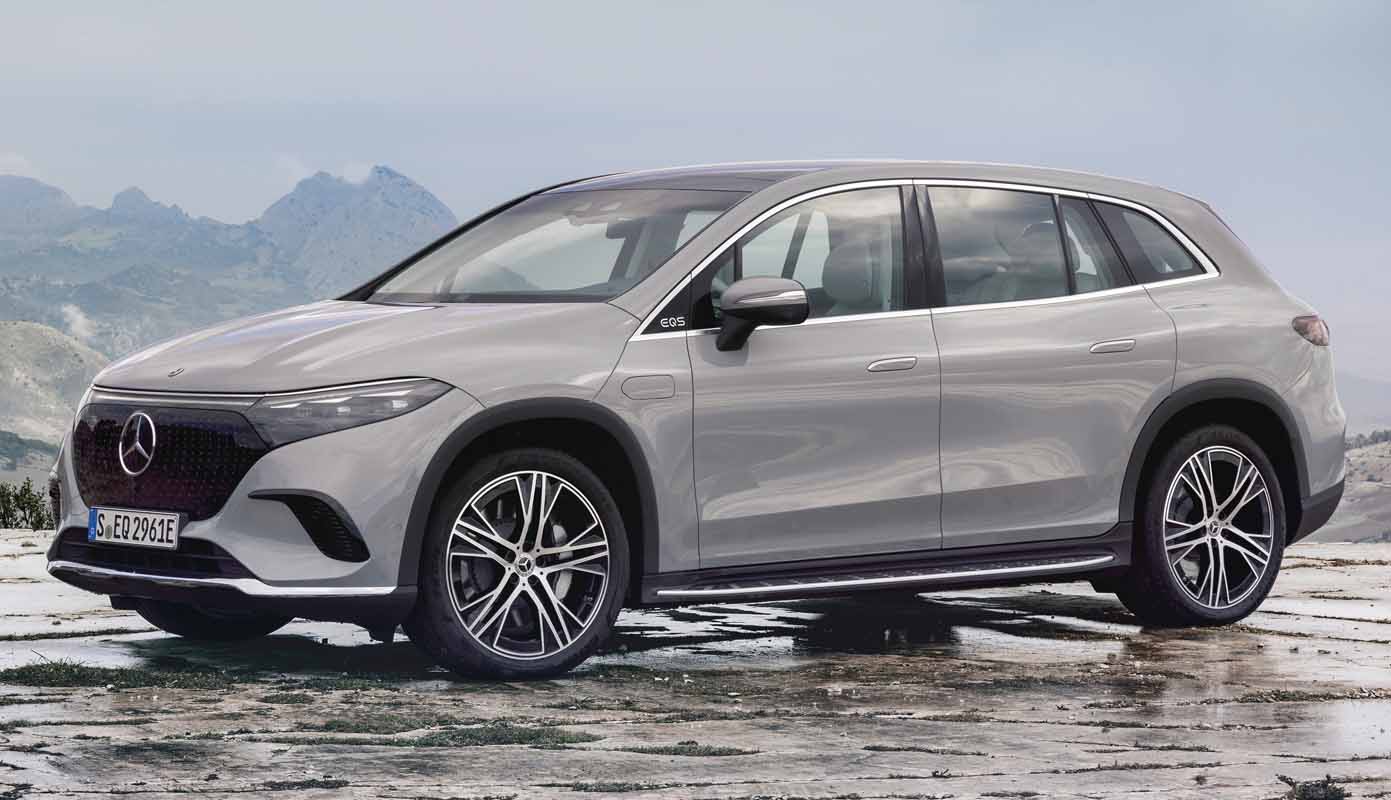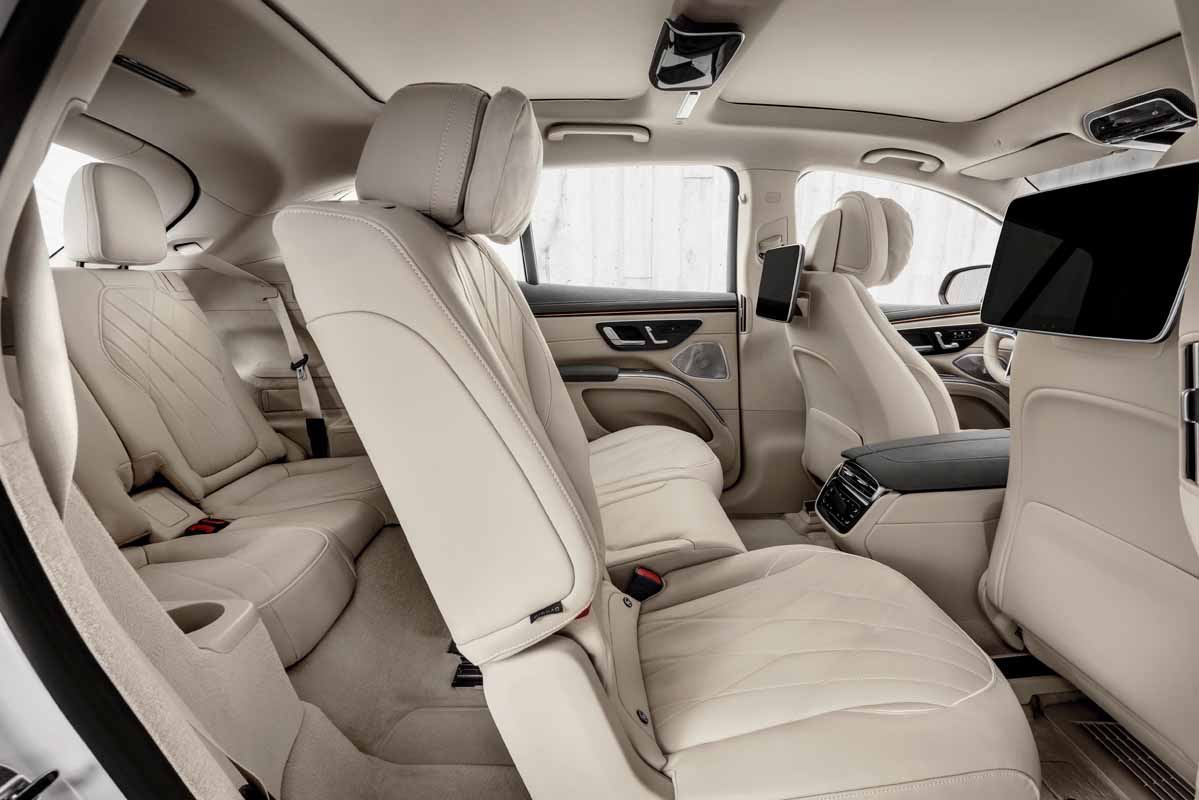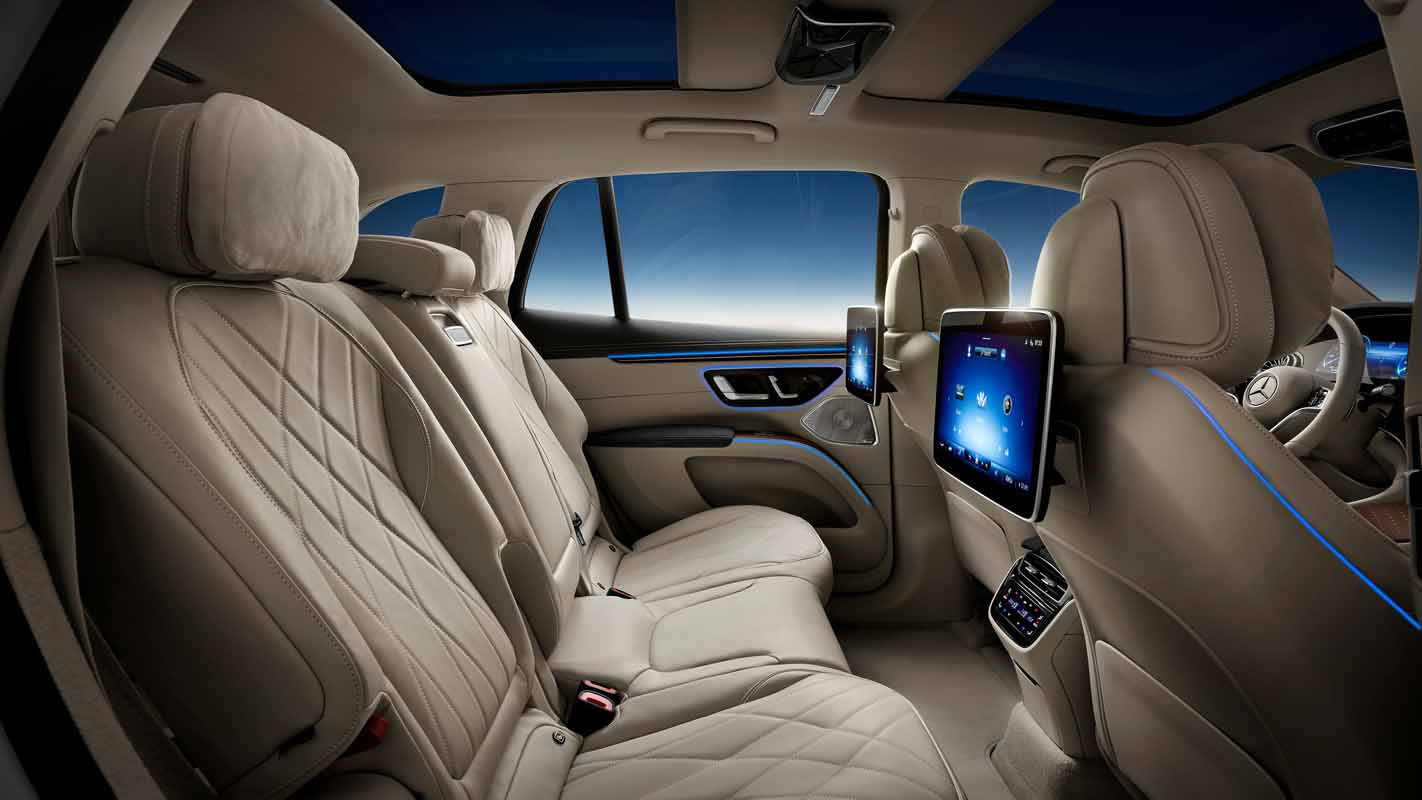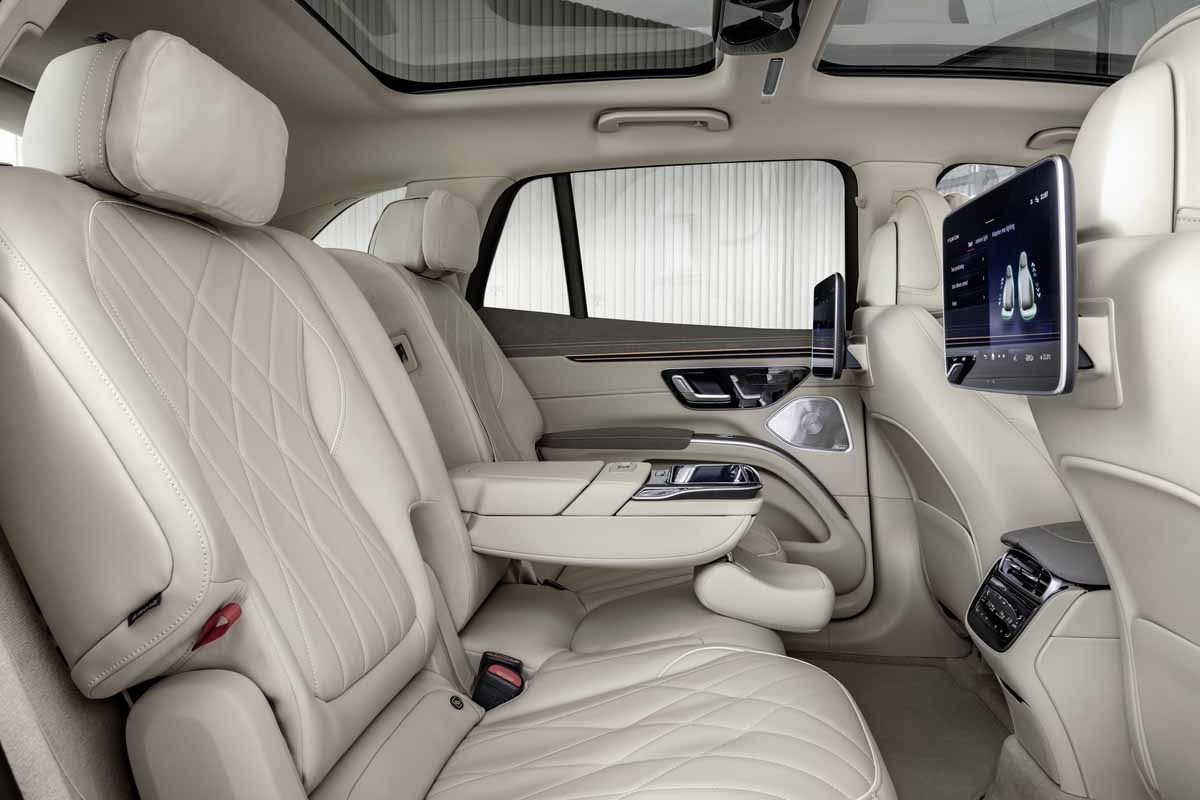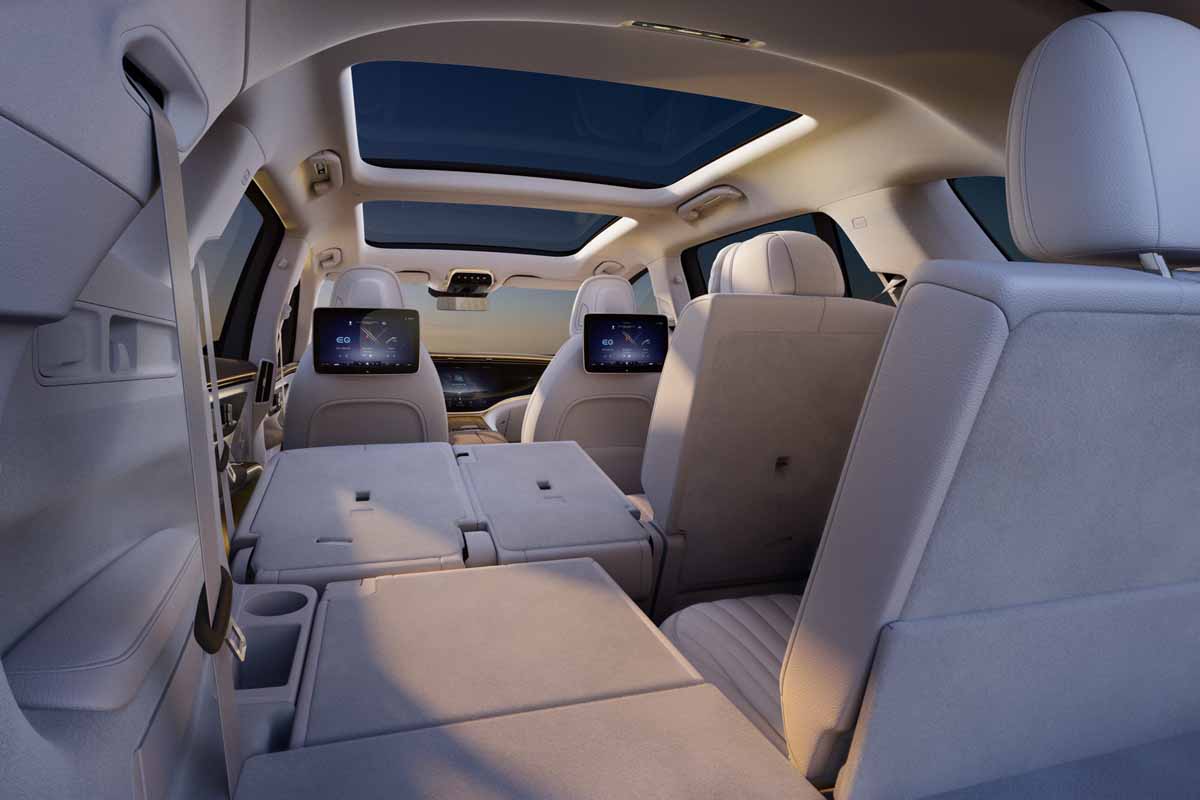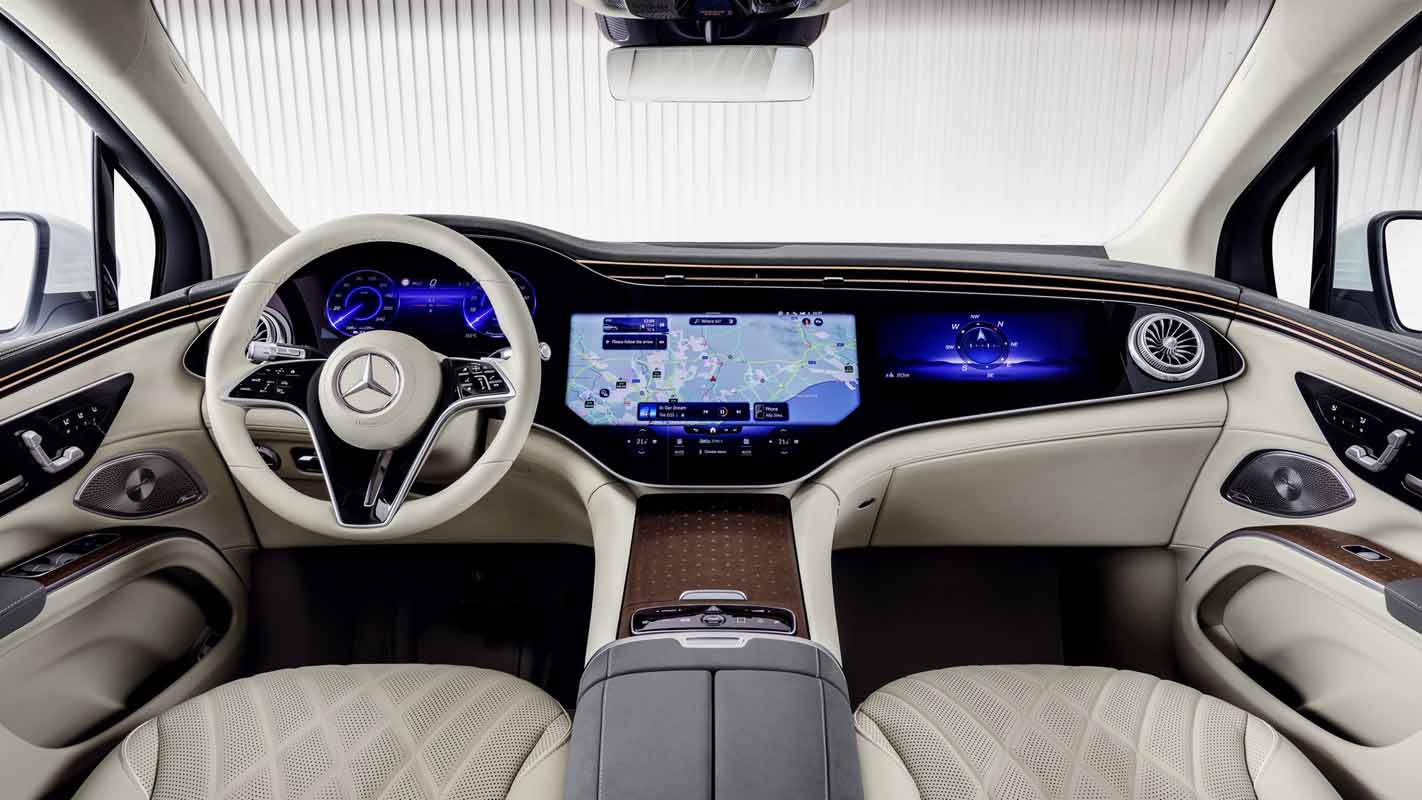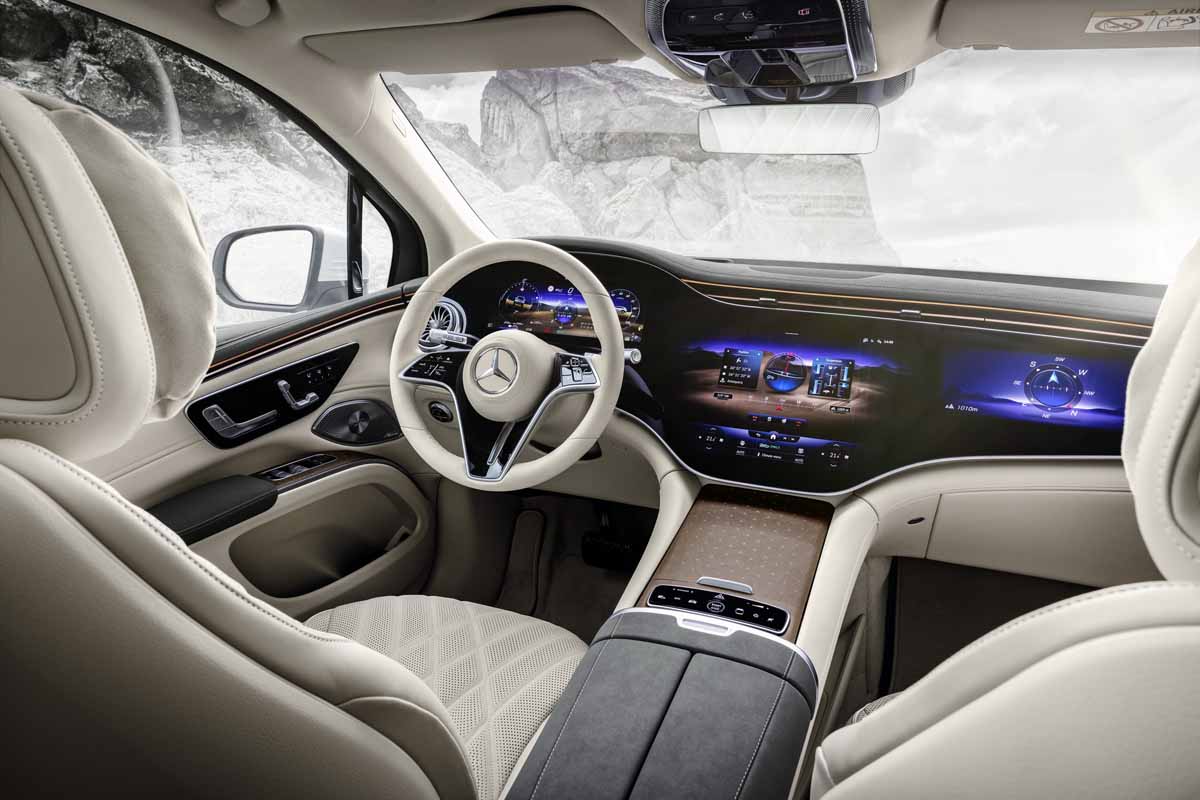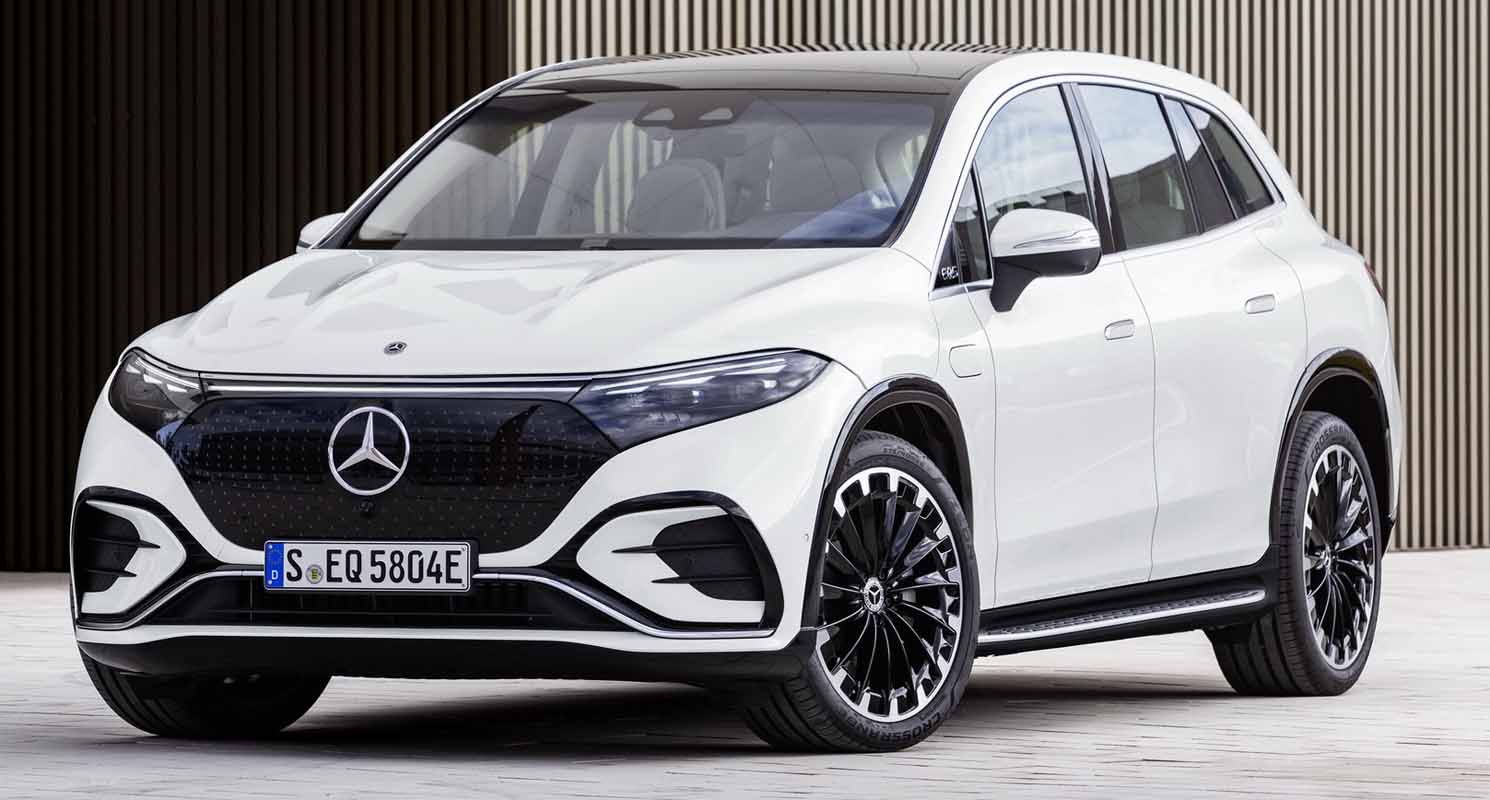
The Mercedes EQS SUV brings three-row electric luxury to the brand’s growing EQ lineup. It combines smooth performance with intuitive technology while offering the comfort expected from a flagship model.
Design with a Focus on Space
The exterior follows the EQ family’s streamlined style with clean surfacing and rounded edges. Inside, the cabin emphasizes comfort through generous legroom and a flexible three-row layout.
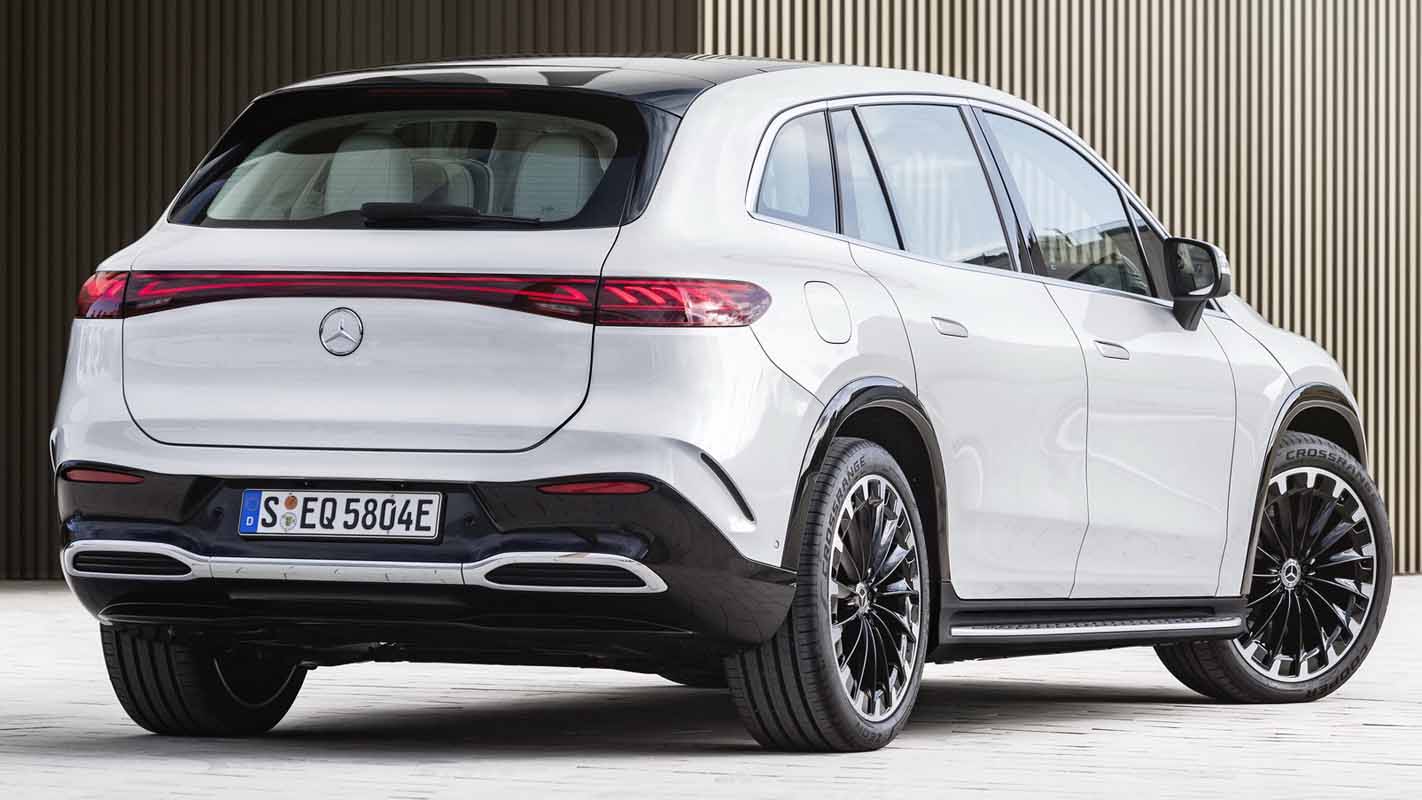
Materials and Cabin Experience
Soft-touch surfaces, warm colors, and refined trim create a calm environment. The EQS SUV uses advanced sound insulation to reduce cabin noise during long drives.
Infotainment and Digital Features
The available MBUX Hyperscreen stretches across the dashboard to deliver fast responses and clear graphics. It includes improved voice control, personalized profiles, and over-the-air update capability.
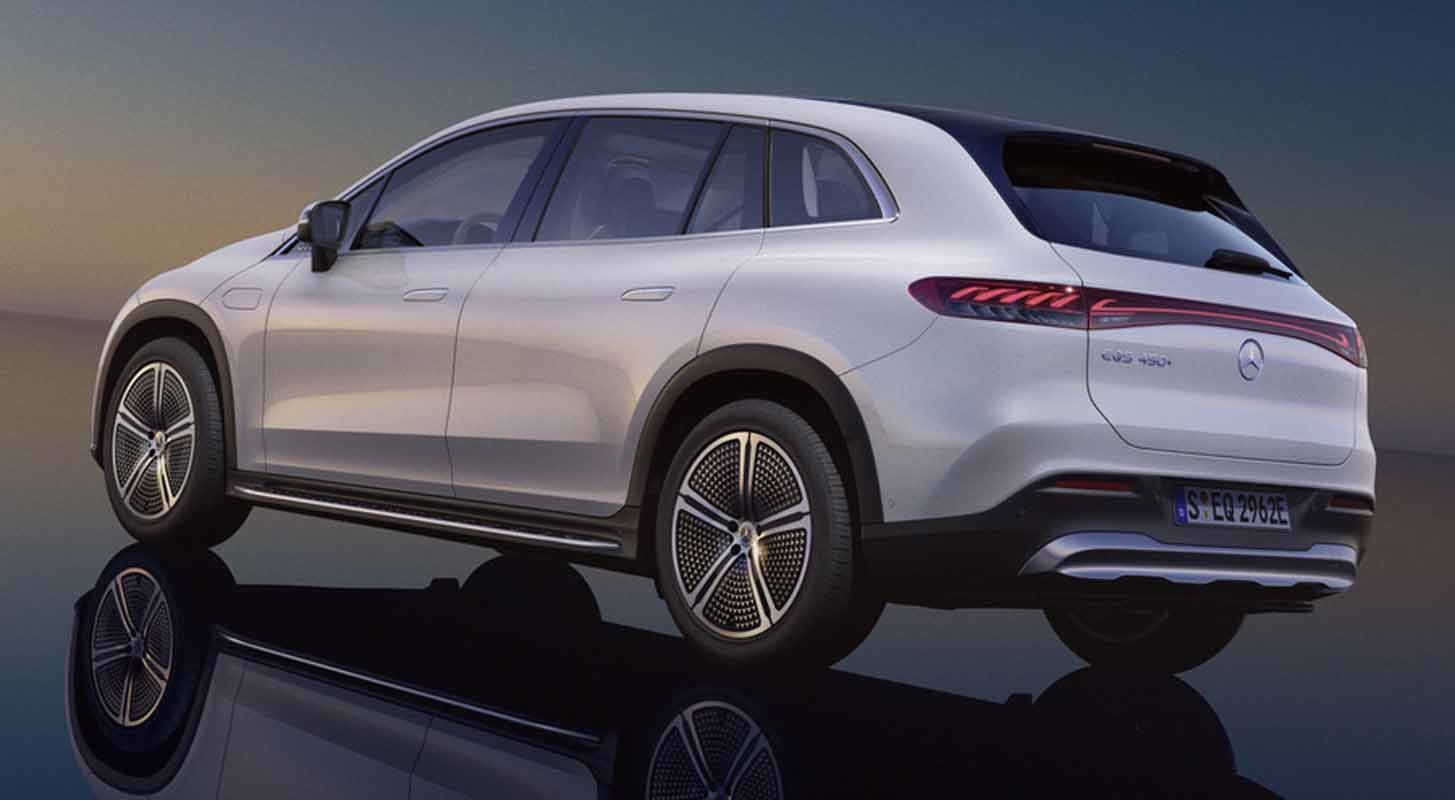
Comfort and Convenience
Heated and ventilated seating supports relaxed travel. An optional third row expands the vehicle’s usability, while rear passengers benefit from dedicated climate settings.
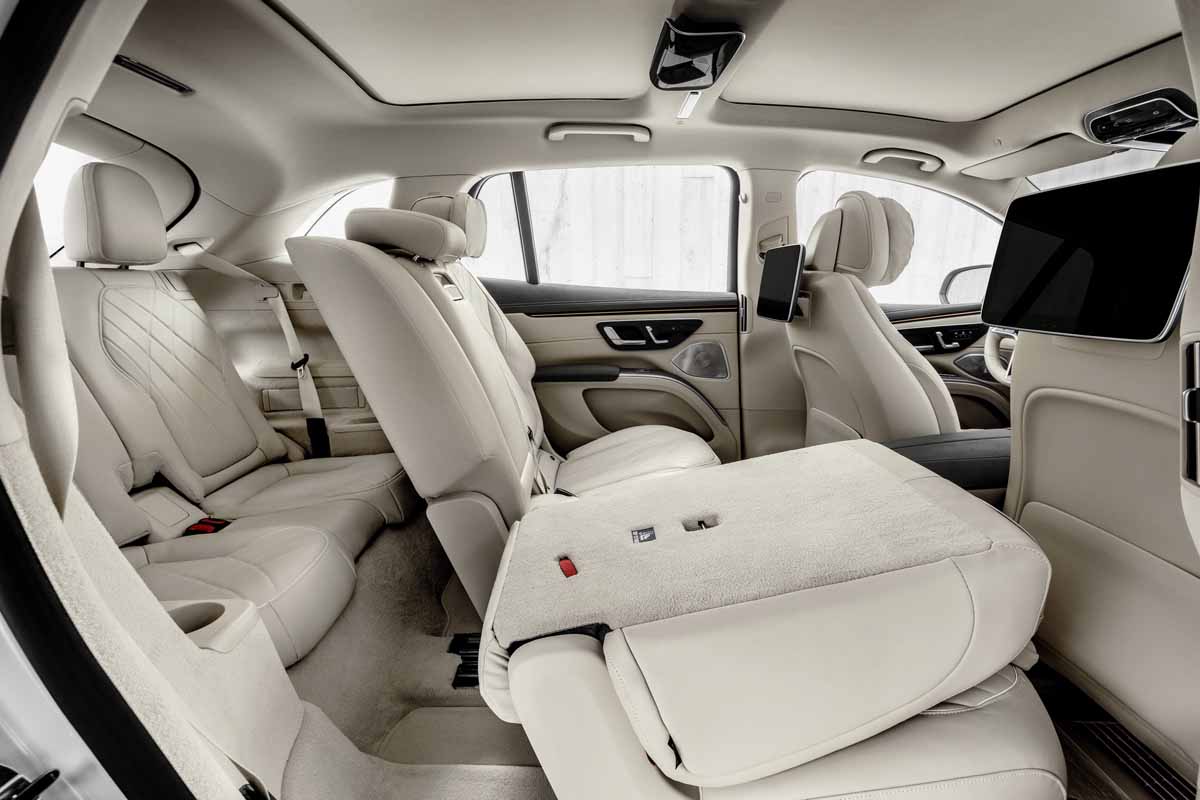
Driver Assistance and Safety
The SUV features a wide suite of assistance systems designed for daily use. Adaptive cruise, automated lane-keeping, and active blind-spot functions help support safer travel.
Navigation and Route Planning
The navigation system selects efficient routes and identifies ideal charging points. Real-time data assists with range planning during longer trips.
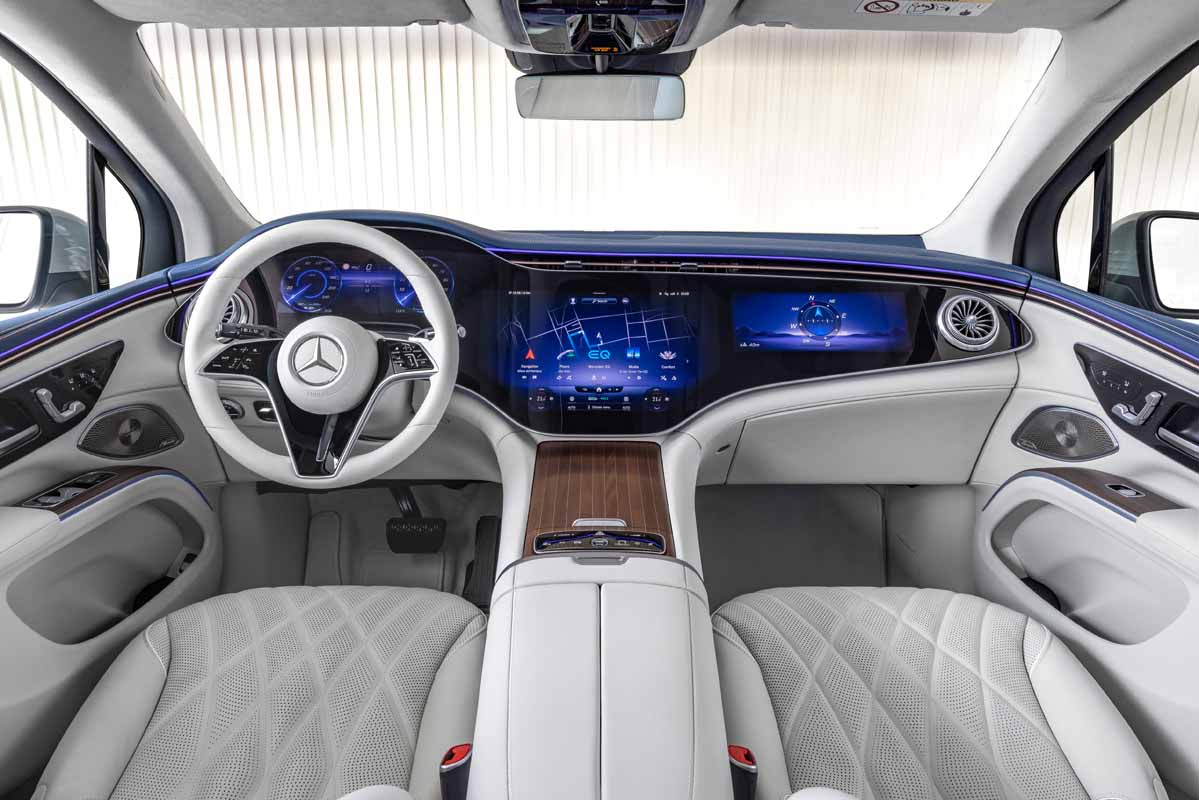
Power, Range, and Performance
The Mercedes EQS SUV offers smooth electric acceleration supported by quiet motor operation. Its battery delivers long-distance capability, while the adaptive air suspension improves stability and comfort.
Driving Dynamics
Rear-axle steering enhances maneuverability in tight spaces. The system adjusts wheel angles to deliver more precise handling during city and highway use.

Charging Capability
Fast-charging support enables short stops during extended journeys. The vehicle manages battery temperature to maintain steady performance across varying conditions.
Practicality for Daily Use
The cabin offers strong cargo flexibility with fold-flat rear seating. Multiple storage compartments support active lifestyles and family travel.
Summary
The Mercedes EQS SUV combines refined design, long-range capability, and advanced digital features in a versatile three-row layout. Its focus on comfort and efficiency positions it as a strong entry in the expanding electric luxury segment.

